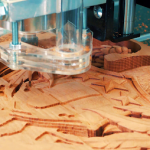Facial hair removal is a common practice for individuals seeking smooth and radiant skin. Various methods, ranging from traditional techniques to modern technologies, are available to remove unwanted facial hair. I’ve been exploring various options for grooming routines, but I’m curious—what about facial hair removal? Are there effective and convenient methods you would recommend for a hassle-free experience?
In this comprehensive guide, we will explore different types of equipment designed specifically for facial hair removal, considering their effectiveness, benefits, and potential drawbacks.
Manual Methods
Tweezers
Tweezers are a simple and cost-effective tool for removing individual facial hairs. While effective for precision, tweezing can be time-consuming and may cause discomfort, especially for those with low pain tolerance.
Epilators
Facial epilators are mechanical devices designed to grasp and pull out multiple hairs simultaneously. They provide longer-lasting results compared to tweezing but can be uncomfortable, particularly for first-time users.
Facial Razors
Facial razors, also known as dermaplaning tools, are designed to remove fine facial hair and exfoliate the skin. They offer a pain-free solution and can be particularly effective for peach fuzz removal.
Chemical Depilatory Creams
Depilatory creams contain chemicals that break down the structure of hair, allowing it to be easily wiped away. These creams are applied to the skin, and after a specified time, the hair can be removed. It’s crucial to follow the product’s instructions carefully to avoid irritation.
Waxing
Waxing involves applying warm or cold wax to the skin and then removing it, along with the adhered hair, using a cloth strip. While effective, waxing can be painful and may cause redness and irritation, making it important to use quality products and follow proper techniques.
At-Home IPL Devices
Intense Pulsed Light (IPL) devices designed for at-home use have gained popularity for facial hair removal. These devices emit controlled pulses of light that target the hair follicles, inhibiting hair growth over time. IPL devices are generally safe, but it’s essential to follow instructions carefully and be aware of potential side effects. Here you go for facial hair removal: Ulike’s advanced IPL technology offers a convenient solution, targeting unwanted hair with precision. With customizable settings and a user-friendly design, achieving smooth, hair-free skin at home is now at your fingertips.
Laser Hair Removal Devices
Similar to IPL, laser hair removal devices use focused laser beams to target and disable hair follicles. At-home laser devices are available, but professional treatments are also an option. Professional laser treatments are more powerful and often require multiple sessions for optimal results.
Facial Hair Removal Devices with Cutting Blades
Electric trimmers or shavers designed specifically for facial hair removal offer a quick and painless solution. These devices usually have different attachments for precision and can be used regularly for maintenance.
Threading Devices
Facial hair threading devices use a twisting motion to trap and remove hair at the follicle level. While threading can be more precise than some other methods, it may cause discomfort and requires a certain level of skill.
Conclusion
The choice of facial hair removal equipment depends on individual preferences, pain tolerance, and desired results. Manual methods like tweezing and epilating offer precision but may be time-consuming and uncomfortable. Chemical depilatory creams provide a quick solution, while waxing and threading can be more painful but offer longer-lasting results.
For those seeking a balance between effectiveness and comfort, electric trimmers, facial razors, and at-home IPL devices may be suitable options. It’s important to carefully follow instructions, conduct patch tests when necessary, and choose the method that aligns with personal preferences and skin sensitivity. Consulting with a dermatologist or skincare professional can also provide valuable insights and recommendations based on individual skin types and conditions. Ultimately, the ideal facial hair removal equipment is the one that suits your needs and helps you achieve the desired results with minimal discomfort.









